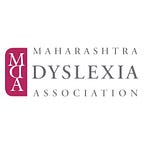Challenges in Assessing for Learning Disabilities
-Dr. Maya Kalyanpur
On August 7, MDA was thrilled to host an interactive session led by Dr. Maya Kalyanpur, entitled “Challenges in Assessing for Learning Disabilities”. Dr.Kalyanpur is a Professor in the School of Leadership and Education Sciences, at the University of San Diego. She has also worked as an international consultant in inclusive education with the national Ministry of Education in Cambodia, the World Bank, and UNICEF Cambodia. Over the years, she has researched about indigenous epistemologies of disability in India. With several books to her credit, she is currently co-editing a book on an alternative analysis of disability appropriate to South Asia.
Dr. Kalyanpur enlightened that though the research originated in the US, many of the challenges we face in diagnosing Learning Disability(LD)appear to be the same worldwide. In India, the issues have more complexity because of diverse socio-economic and multiple languages that are spoken and taught.
There are four basic flaws in how we typically assess students for LD: tests assume prior knowledge, IQ tests are problematic, the myth of the ‘norm’, and the categorization of LD as a ‘soft’ disability.
Prior knowledge
Many tests are given to students assuming that some knowledge is universal. However, most of this knowledge and many facts are cultural. For example, in India, a picture of a matka would be easily recognized as a container for water. However, this may not be true of students in the US.
Culture also influences skills we presume to be ‘innate’. In a society where pencil and paper are not always used, drawing and writing will not be innate skills. Similarly, using clay to make models of objects could be considered an innate skill in some cultures, but not all. Universal knowledge and innate skills are culturally based and influenced. In our practice of assessment, we need to ensure that the tests given to students are valid and reliable for the population of students who are taking the test.
IQ Tests and the Myth of the ‘Norm’
In any standardized test, the group on which the test is normed should be a universal group that includes the range of people that exist in that society. Several problems arise when we assume that the normed group is universal. If we were to look at IQ, there are differences in norms between the UK, the US, and India; what we hold to be true for the UK is not necessarily true for the US population. This means that technically we should not use a UK based test for the US population. Not only are there differences in norms between countries, there are also differences between ethnic groups in the same country. Dr.Kalyanpur illustrated this with an example: she stated that the ‘average’ IQ for a person of African-American ethnicity is 93, for a Caucasian American it is 100, and for Asian-Americans, it is 104. These numbers would suggest that Asian-Americans are a ‘more intelligent’ race, but of course, this assumption is non-factual.
A member of the audience mentioned that the Wechsler Intelligence Scale for Children-Fourth (India Edition) was normed on a sample of 322 children from elite English medium schools. This ‘norm’ is not a true representation of the population in India and, therefore, would not yield reliable results for comparison.
LD as a ‘Soft’ Disability Category
Because LD does not have the roots for physical or medical diagnosis, there is no ‘hard’ evidence of disability. In fact, India recognized it by law only in December 2016. The fact that there is no hard evidence of LD has caused many challenges in diagnoses.
Recent research suggests that Learning Disability is a socially constructed category of disability and that the context of ‘school’ makes children learning disabled. The idea behind this is, if people can’t perform a necessary skill for survival in today’s world, they have a learning disability. Today’s skill may be reading, and tomorrow we may consider not being digitally literate as a learning disability.
In the US, minority students (non-white, non-English speaking) are over-represented in the category of LD, and these numbers vary from state to state. More African-American and Alaskan/Native American students are diagnosed with LD than their white counterparts.
One of the most challenging problems in assessment, especially of English Language Learners, is understanding whether difficulty in learning is rooted in language acquisition or learning difference. As is apparent, this challenge in assessment becomes exponential in a county like India where children speak and are taught in varied languages. Where do we even begin to distinguish if a child is having difficulty learning because of a learning issue, or because of a language acquisition issue?
In conclusion, Dr.Kalyanpur shared that though there were no easy answers or solutions to the challenges we face, it is our responsibility to identify the strengths of our students and to create assessments that test a child’s learning process and not their knowledge. She mentioned the DALI (Dyslexia Assessment for Languages of India) as a step in the right direction because it allows us to screen students early and to know if literacy issues are occurring in one language or multiple languages. This distinguishes challenges in learning from challenges in language acquisition and helps to build children’s skills as soon as we recognize the need. In other words, we must become more responsible assessors and more responsive teachers to the needs of our students.
